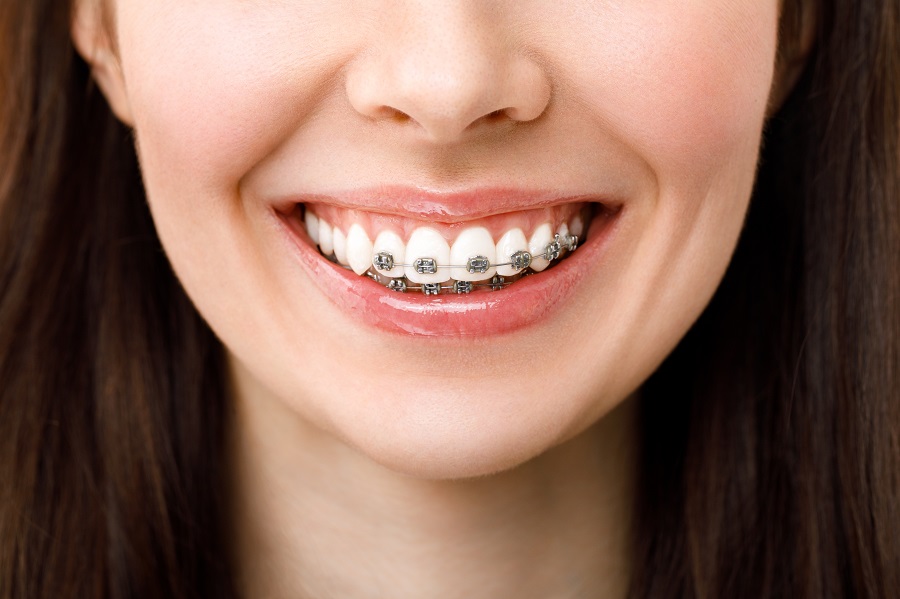Braces are a typical dental tool used by dentists and periodontists to correct dental alignment. Braces are also used by professionals to rectify any crookedness or unnatural crowding of teeth. Mostly, braces are applied on younger people but it is increasingly becoming popular among adults too.
Crooked teeth are not just about messing up your smile and make you uncomfortable in public. Issues with crooked teeth, unnatural crowding of teeth, or non-aligned teeth are more than just a cosmetic thing. If the upper teeth are not aligned with the lower set and overlap it causes an ‘overbite’. Similarly, the lower set overlapping the upper set causes an ‘underbite’, making it difficult to eat properly. People having issues like underbite or overbite might not feel any problem after a certain period but that doesn’t protect them from any further damage. Fixing such issues is necessary to make chewing, eating, and speaking better.
How are Dental Braces applied?
A typical dental brace has a few parts, namely Bracket, Buccal Tube, Headgear Tube, Band, Archwire, Elastic ties, and Elastics. If anyone is having issues like a crooked tooth (or more), unusual gaps between teeth (more or overcrowding), or no-aligned teeth set, the dentist or periodontist will have to determine whether surgery is required or not. Usually, the diagnosis can be done after an X-ray of the mouth, and a digital scan of the teeth. If the issue is not serious and surgeries are not required to fix it, the most common method is to apply braces.
Though the problem is fixed with braces, not all types require the same type of braces. Braces can be of Metal, Ceramics, and other types. Depending on the problem the professional will take a call on which type is best suited for the patient.
The braces are consist of a small rectangular metal/ceramic part that is fixed on the outer side of the tooth. This is called Bracket. It also consists of a metal band (stainless steel or titanium) which is applied around the molar teeth. Both the Bands and the Brackets are connected with a metal wire named Archwire. To provide a better grip and protect the enamel, elastic band or ties are applied under the Brackets or Bands. Often elastic ties are applied between the upper and lower set to produce more accurate pressure.
This entire setup is just to create a particular pressure (different in different cases) to force the teeth to move towards a certain position. The prolonged pressure on the teeth influences the bone structure in the jaw and eventually corrects the shape or the alignment of the teeth.
Timeframe, Age factor, Check-ups, Pain, and other facts
The treatment is different for different cases. Depending on the severity of the problem one might have to wear braces for anything between 1 to 3 years. After the braces are removed, the professional will diagnose the situation may recommend a retainer for the next six months or longer.
Generally, there is no age to get braces. But, during the teenage, our jawbone is under development. If one goes through the procedure early in their life, it may fix the problem in lesser time. However, adults can also go for the procedure, though the procedure will take longer to fix the issue.
After one gets braces, the dentist or orthodontist will schedule a check-up once every month. The check-ups will determine whether the braces are in the right position creating the correct pressure. Often the pressure needs correction and the professional will adjust the wire, bands, or springs to apply more pressure or release some. The check-ups are important to ensure there are no growing symptoms due to the braces or any complications. A visit every month will also ensure your oral health is also monitored.
Usually, the treatment is not painful but in some cases, one may feel a little pain or soreness. In such cases, the dentist will prescribe some pain relievers. If you feel pain during the adjustments, you must let your dentist know about it. That may cause by the particular adjustment which needed to be altered.
Braces don’t affect your daily routine, although in some cases you need to be more careful. In cases like playing sports, it is important to wear a mouthguard to safeguard the inner side of your lip from the metal braces.
Once the braces are off, you still need to check with your dentist once in a while to ensure the teeth are set in the desired manner. The professional will take bite impressions of your teeth once or twice over the time to determine the alignment. The check-ups will also prevent any oral health complications.
Having braces is not a troublesome experience. Once you get the feel of it, the discomfort goes away. However, it is important to take special care of your oral health. Brushing through the gaps of all the wires and cleaning the components are very important. It is highly recommended to follow every instruction given to you by your dentists regarding brushing, flossing, and any other cleaning procedure. Clean your mouth properly after every meal to avoid any food particle being stuck between the wires and gaps. Avoid sugary foods and sticky foods like chocolate, caramel, etc.
More Blog Posts
Visit Our Office
Office Hours
- MON - THU8:00 am - 7:00 pm
- FRI7:00 am - 4:00 pm
- SAT8:30 am - 3:00 pm
- SUNClosed






